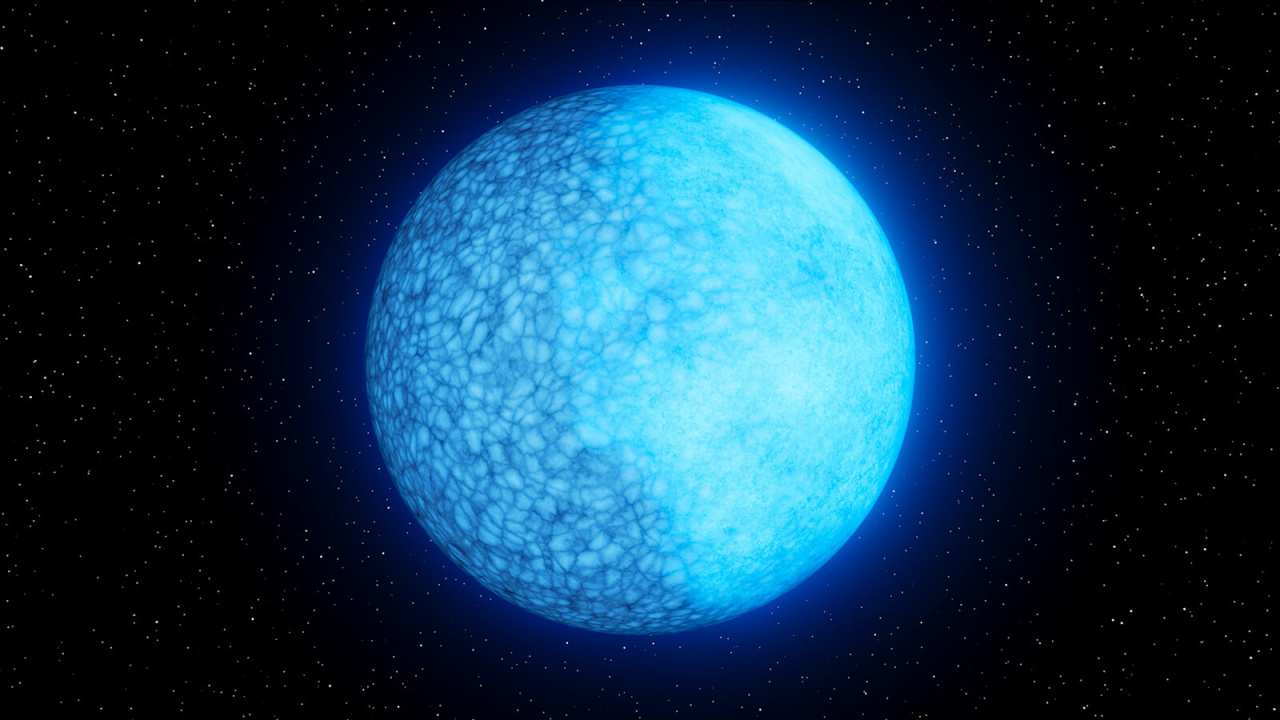Astronomers have discovered one of the most amazing stars ever discovered. Its surface is not uniform. This white dwarf is half made of hydrogen and the other half of helium.
White dwarfs are the remnants of dead stars that once shone like the sun. They form when fusion fuel burns out in a star and nuclear fusion stops. Then the star sheds its outer layers. What is left of it is its core, which is a white dwarf.
Making these types of objects depends on their initial mass. If it is small – not exceeding 0.4 solar masses – after death it will turn into helium white dwarfs. This means that All the hydrogen they make up will be converted into helium by nuclear fusion. However, the next reaction – the fusion of helium atoms into heavier carbon – will not take place. Such a white dwarf would be built from helium.
More massive stars, such as our Sun, have longer lifespans. After hydrogen fusion, helium fusion into heavier elements will begin to occur in them. As a result, these stars will turn into carbon (or carbon-oxygen) white dwarfs when they stop producing energy.
Most importantly, in each case, after the star burns out, scientists expect the formation of a white dwarf, consisting of evenly distributed elements. Even more surprising were the observations of a star named Janus. Janus is a white dwarf whose sides vary in composition. One is made of hydrogen and the other is made of helium. His discovery was published in the latest issue of the journal Nature.
The name given to this star is not accidental. Janus is a very ancient Roman god, the patron of transformation, transition, and time. Traditionally, he was depicted on Roman coins as a male figure with two faces looking in opposite directions. Just like a new finder Two-faced star.
The white dwarf spotted in the constellation Cygnus has a lot in common with Janus. “Its surface changes completely depending on which side you look at,” Dr. Ilaria Caizo, an astrophysicist at Caltech and lead author of the paper, told the Guardian. “When I show people the results of observations, they are completely surprised.” she added.
Janus is located 1,000 light years from Earth. Caiazzo discovered it with the help of the Zwicky Transient Facility, an instrument at the Palomar Observatory near San Diego. The scientist was searching for white dwarf candidates when she spotted an object that rotates on its axis every 15 minutes. It piqued her interest as its brightness changed rapidly.
The light coming from the star was studied using a spectrometer. A spectrometer is used to determine the chemical composition of distant objects – such as stars or the atmospheres of planets. In the case of Janus, the result was quite a surprise. It turns out that half of it consists of hydrogen, and the other half of helium.
If we could look at this star up close, would we be able to tell the difference? According to the researchers, yes. Half hydrogen from Janus Soft and half helium – Spongy like it’s made of bubbles.
Explaining how a star like Janus formed is not easy. Occasionally, white dwarfs undergo a metamorphosis. As it cools, the heavier elements – in this case helium – move from the core closer to the surface, mixing with the remaining hydrogen that forms it. Researchers believe Janus may be in the midst of such a transformation. However, this does not explain why it is only placed halfway across the star.
According to scientists, this may be the result of Janus’s asymmetric magnetic field. If it is stronger on the one hand, It may limit the penetration of helium from the star’s core to the surface. So this half of the star will be hydrogen. On the other hand, the process described above takes place freely, which makes the second “face” of Janus Helium.
“We don’t know if these theories are correct,” says James Fuller, professor of astrophysics at Caltech and co-author of the paper. “However, we cannot think of how to explain the difference between the two sides of this star without referring to magnetic fields,” – adds the researcher.

Echo Richards embodies a personality that is a delightful contradiction: a humble musicaholic who never brags about her expansive knowledge of both classic and contemporary tunes. Infuriatingly modest, one would never know from a mere conversation how deeply entrenched she is in the world of music. This passion seamlessly translates into her problem-solving skills, with Echo often drawing inspiration from melodies and rhythms. A voracious reader, she dives deep into literature, using stories to influence her own hardcore writing. Her spirited advocacy for alcohol isn’t about mere indulgence, but about celebrating life’s poignant moments.





